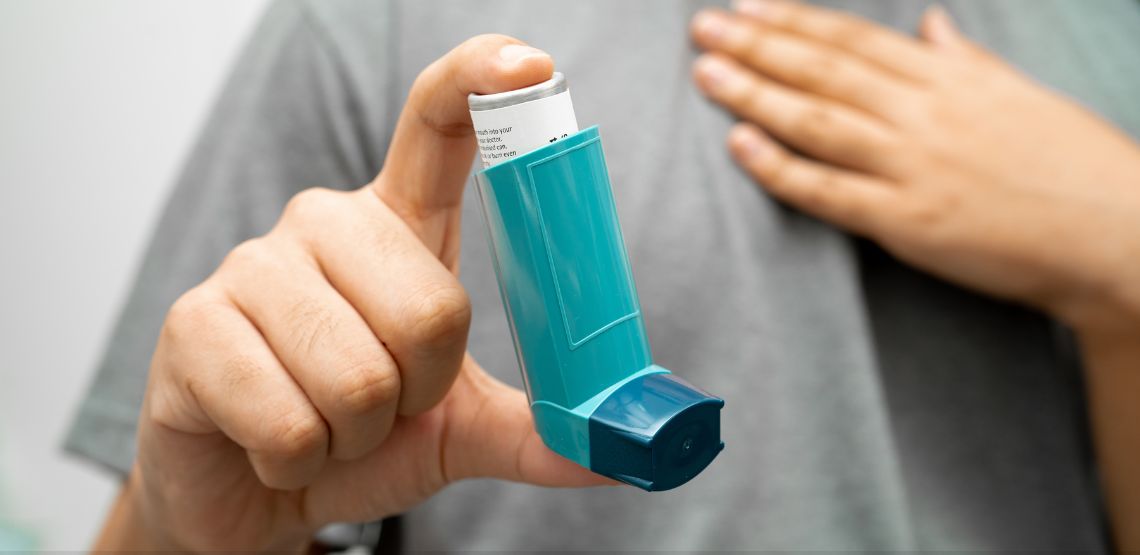Top COPD Inhalers
Managing COPD is crucial to improving patients’ quality of life, and treatments like Zemaira, can help. It is used to treat alpha-1 antitrypsin deficiency (AATD), a genetic condition that can worsen COPD.
1. Zemaira
Zemaira helps by supplementing the body’s natural levels of this protein, which normally protects the lungs from damage caused by an enzyme called neutrophil elastase. In individuals with AATD, the body doesn't produce enough of this protein, leading to lung damage over time.
2. Short-Acting Bronchodilators (Rescue Inhalers)
Short-acting bronchodilators, such as albuterol (Ventolin, ProAir) and ipratropium (Atrovent), provide quick relief from sudden breathing difficulties. They work by relaxing the muscles around the airways, opening them up for easier airflow.
3. Long-Acting Bronchodilators
These inhalers are used daily to provide long-term control of COPD symptoms. They are divided into two main types:
- Long-acting beta-agonists (LABAs): Includes medications like salmeterol (Serevent) and formoterol. LABAs relax airway muscles for extended periods.
- Long-acting muscarinicantagonists (LAMAs): Includes tiotropium (Spiriva) and aclidinium (Tudorza). These inhalers reduce airway constriction and mucus production.
Benefits include flare-up prevention, lung function improvement and a noticeable reduction of breath shortness during daily activities.
4. Combination Inhalers
Combination inhalers contain two or more types of medication to manage multiple aspects of COPD. Examples include:
- Advair (salmeterol and fluticasone): Combines LABA with an inhaled corticosteroid (ICS).
- Trelegy Ellipta (fluticasone, umeclidinium, and vilanterol): A triple-action inhaler with LABA, LAMA and ICS.
Combination inhalers significantly simplify the treatment regimen and are effective for both moderate to severe COPD.
5. Inhaled Corticosteroids (ICS)
ICS inhalers, such as budesonide (Pulmicort) and fluticasone (Flovent), reduce inflammation in the airways. While not a first-line treatment, they are often used in combination with bronchodilators for patients prone to frequent exacerbations. ICS inhalers are perhaps best known for preventing COPD flare-ups.
6. Nebulizers
While not technically inhalers, nebulizers are devices that turn liquid medication into a mist, making it easier to inhale. They are often used for severe COPD or in patients who have difficulty using inhalers.
7. Oxygen Therapy
For advanced COPD, supplemental oxygen can improve the quality of life by ensuring the body receives adequate oxygen levels. It’s typically prescribed for patients with low blood oxygen levels.
8. Pulmonary Rehabilitation
Pulmonary rehabilitation includes various elements. It combines exercise, education and support to help COPD patients improve their physical fitness and manage symptoms more effectively. Providing proper education on treatment allows patients to manage their COPD independently and confidently. It is often recommended alongside inhaler or medication use.
9. Oral Medications
Certain oral medications, such as theophylline or roflumilast (Daliresp), can help manage inflammation and improve breathing. These are typically used for severe COPD cases or when inhalers alone are insufficient.
10. Lifestyle Changes
Managing COPD also involves lifestyle adjustments, like quitting smoking, regular physical activity, a healthy diet and adopting healthy lifestyle choices. This, in tangent with other treatment options, can lead to noticeable results.
11. Surgery
For severe cases of COPD, surgical options such as lung volume reduction surgery or a lung transplant may be considered. However, these are typically last-resort treatments and should only be considered in very serious cases of COPD where other treatment options weren’t effective.
Understanding COPD Treatment
The primary goals in treating COPD are to alleviate symptoms, prevent complications and improve patients’ ability to lead active lives. Treatment generally includes a combination of medications, lifestyle adjustments, and, in more severe cases, surgical interventions.
Read on to learn all about asthma attacks.

